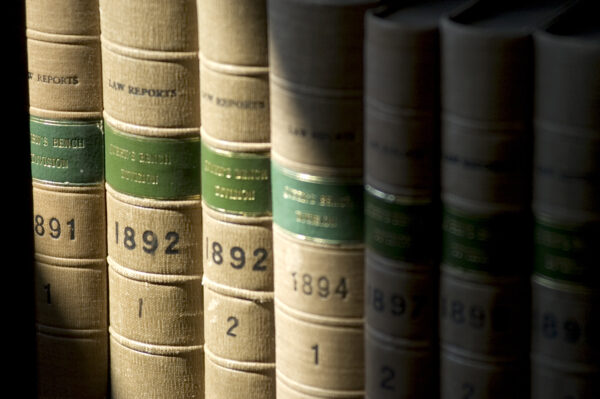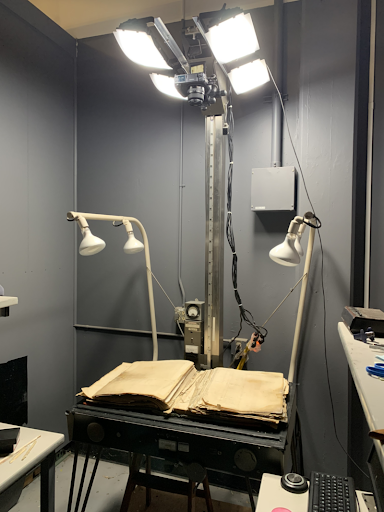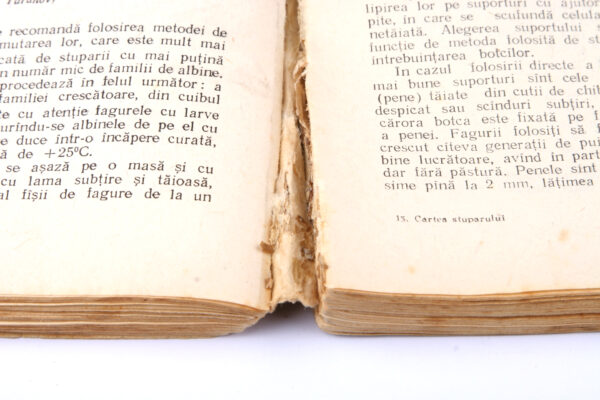Have you ever felt overwhelmed by the sheer volume of books that need to be scanned? Whether it’s deed books, lab notebooks, or personal collections, the digitization process can seem daunting.
This guide delves into the specifics of book scanning and how it uniquely differs from traditional scanning. Our goal is to give you the knowledge and tools to successfully digitize your books, enhancing their accessibility and preservation. Let’s take a look!
Types Of Books That Get Digitized
The types of books that get scanned and digitized vary based on the different types of companies we work with, the types of materials they have, what they need done, and so on. However, in most cases, the majority of projects related to book scanning involve the following types:
One common type is deed books. These are oversized books that contain land record information and details related to real estate archival history. These are usually large, older books with heavy leather covers, and they typically have 11×17 or larger pages, so when opened, they are double that size.

Another type of book often scanned comes from planning or building departments. A special type called a Sanborn book, along with all the plans, plan sets, building drawings, and engineering drawings, are used by these departments to perform their work properly.
You will also find ORs, or Official Records, and vital records. These include documents related to individuals such as death certificates, marriage certificates, and similar records typically found in county recorder offices.
Lab notebooks are another very common type. Research agencies or biotechnology companies often have lab notebooks used by researchers to keep data and track experiments and research activities. Eventually, they want these scanned, so lab notebooks are very common in digitization projects.

Beyond these, you might encounter smaller, more varied projects. For example, a company might have bound manuals they want to scan, yearbooks from a college or high school, or even an individual wanting to digitize out-of-print books. The types of books scanned really depend on who the client is, but those listed above are among the most common.
Bound Or Unbound?
When it comes to book scanning, there are two different ways to scan. One option is to use a high-speed scanner if the book can be separated into individual pages. The other is to use a planetary, or overhead, scanner if it cannot. Based on this, there are two terms that you should know related to book scanning: bound and unbound.

Bound books are just like they sound—they’re bound together. The pages are attached to the spine using stitching, glue, or other forms of binding. There may even be instances where pages are connected together via special bindings, such as a post-bound book. This is a more hefty type of binder where the pages are kept together by large bindings that you screw and unscrew.

Unbound books, on the other hand, are not sealed together in any way. You may have a “book” that isn’t stitched together, allowing it to be taken apart and put through a high-speed scanner if the page size fits.

The most important part about the difference between bound and unbound books is how they get scanned. If you have bound books that cannot be unbound and you don’t want them cut or prepared for an unbound state, you will need to use a planetary or overhead scanner. If you have books that can be unbound or if you’re okay with cutting along the spine to remove the pages, you can use a high-speed scanner to capture those images. Typically, planetary scanning is slower and can cost a bit more, so depending on what you’re looking for, you may prefer to allow the disbinding or keep it on the overhead scanner.
Book Scanning Methods
As we mentioned before, there’s the overhead or planetary scanning method, which uses a camera that captures images from above the book when it’s laid on the scanning surface. Using the overhead scan keeps the format of the book intact.
You can actually have what we call “two-up images,” where it looks just like a book when you have it open and capture both pages at the same time. It is also possible to split the pages in post-processing to what we call “one-up,” where you are only seeing one of those pages at a time. Even though you capture both pages showing, you don’t have to present it that way, but it is possible.
One thing to note with overhead or planetary scanning is that larger books may not fit on a high-speed scanner, so they have to use this overhead scanning method instead.

Now, we just spoke about the high-speed scanner. In this case, the books must be unbound to be able to go through these types of scanners. So if you have a bound book, let’s say a lab notebook with stitching on the binding, and you don’t want us to cut that stitching to put those pages through the high-speed scanner, then it will have to go on the overhead. But if you do allow us to disbind those, we can cut the spine or use a guillotine to cut the entire spine at one time, and then you can have the pages go through a high-speed scanner.
Of course, when you’re scanning, you’re going to be curious about the output methods and formats. The typical formats are bi-tonal or black and white images, grayscale images, and color.
With book scanning, our clients often opt for color because of the original content. Typically, with books, you’re going to have different types of writing in different colors. Especially with lab notebooks, the scientists often use different colors for their drawings or notes. Or if you have old deed books, you may have some red writing, or something that just looks better in color and retains that original look and feel compared to the other formats.
Issues With Book Scanning
As with anything else, there are always issues with whichever method you choose. We try to mitigate the issues as much as possible, but with book scanning, there are, of course, some potential problems. If you’re not able to disbind and remove the spine from a book or get the pages into an individual format, and you have to scan using the overhead method, the gutter—basically where the two pages meet in the middle—may consume some of that content.
If the book is especially thick and the binding is tight with the pages close together, it could be difficult to open it far enough that some of the content doesn’t get lost in that gutter. This could result from how it was bound or who put the book together, but it can be an issue nonetheless.

If you’re able to disbind the book and put it in an unbound state for high-speed scanning, it may not be possible to rebind it in the same way. Typically, when we work with our clients, we only provide the service to get the books in an unbound, scan-ready state. We don’t provide rebinding, at least not in the sense of rebinding the book to its original form. Of course, we’ll put the pages together so they stay together, but we’re not going to rebind the book. You may need to look for a specialty service to do that if you need those books rebound.
Lastly, some issues that can arise are from poor storage conditions or accidents such as the book getting wet, being exposed to a fire, or being in a room that had smoke. These conditions can cause issues for scanning because we may not be able to actually open the book, or certain pages may be very fragile and stick together, making it impossible to scan them. In cases like this, you may need a preservation or restoration service to get these books to a point where they are able to be scanned and digitally captured.

Choosing How To Scan Your Books
When you’re choosing how to scan your books, several considerations can come to mind. Should you opt for a planetary scanner or high-speed scanner? Are you okay with having the books unbound, which involves cutting off the binding? This method is cheaper, but you might prefer to keep the book intact. These are just a few of the questions that need to be resolved.
You should start by knowing the final result you’re looking to achieve. Are you trying to preserve the original material, including the book’s look and feel, or are you just looking to digitize the content?
If you’re only interested in the content and don’t need the original formatting, disbinding for high-speed scanning might be your best option. However, if you want to retain the look and feel of the book, an overhead scanner might be more suitable. The choice also depends on the fragility of the pages. If the book is damaged, or you are concerned about preserving the original material for archiving purposes, you should opt for overhead scanning to keep the book in its current state.
If you’re unsure about how to proceed with scanning your books, that’s completely fine. Companies like ours exist to help. You can reach out to us, describe your project, and tell us what you’re looking to achieve. We can then recommend the steps to get the best results in the most optimal way.
Next Steps
Reach out to us today! Click the “Get Your Quote” button below, fill out the form, and we’ll quickly reply to you to discuss your project.
Further Reading
The Definitive Guide To Bulk Document Scanning
Bulk document scanning is essential for large conversion projects. This guide dives into high-volume document digitization, offering insights into its benefits, the equipment and tools utilized, and best practices to ensure optimal results.
Dos & Don’ts For Successful Digital Conversion
Digital conversion projects can be simple, but that doesn’t mean they’re easy. In this article we’ll give you some “dos” that’ll get your project moving in the right direction (success!) as well as some “don’ts” that you’ll want to avoid.
5 Vetting Questions For A Document Scanning Service
How do you choose who you’ll work with for your document scanning project? In this article we’ll give you five vetting questions that should get you started on the right foot.

